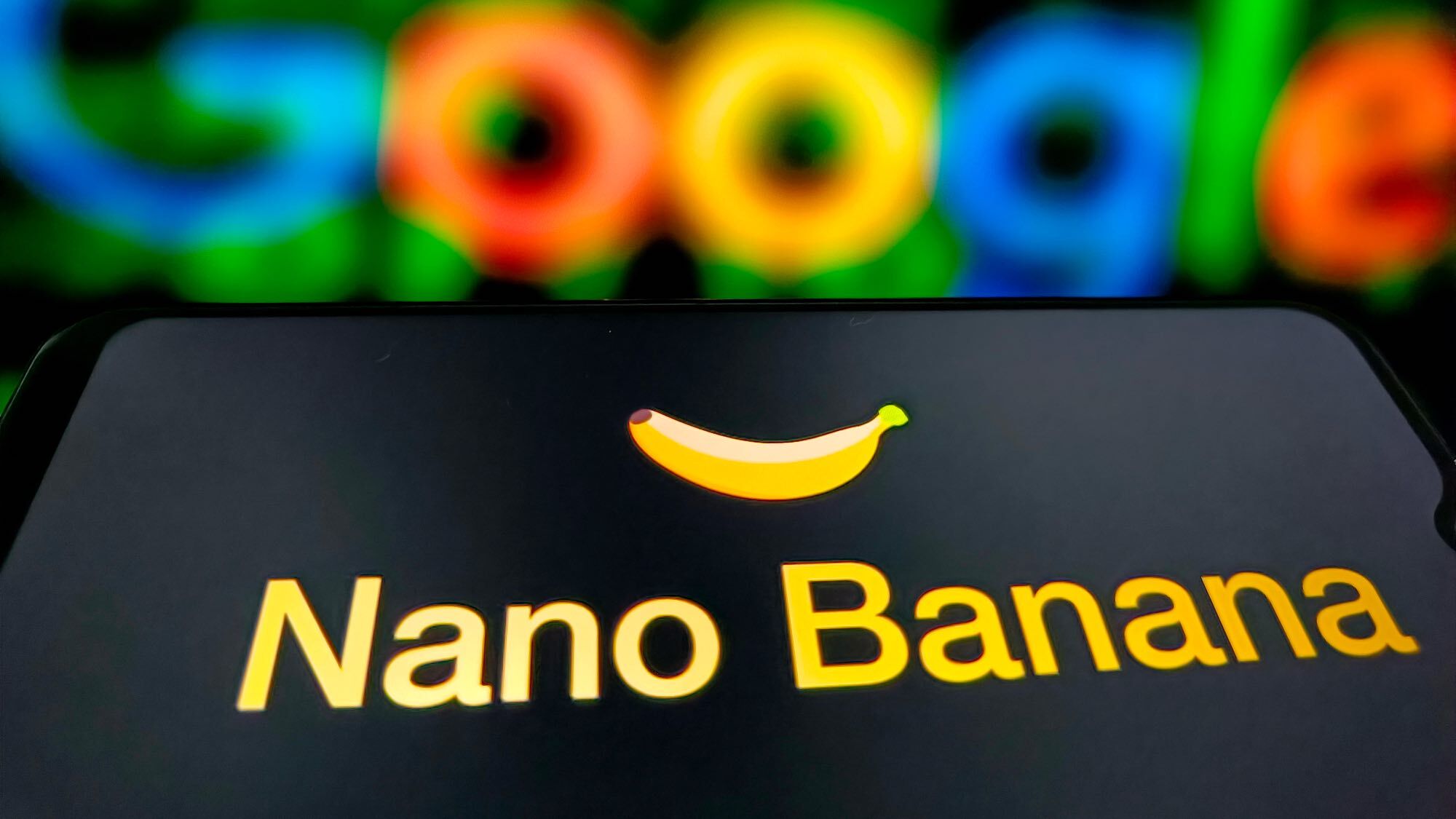Microsoft Surface Duo vs. Samsung Galaxy Z Fold 2: Which foldable wins?
Two major Android's foldable phones duke it out
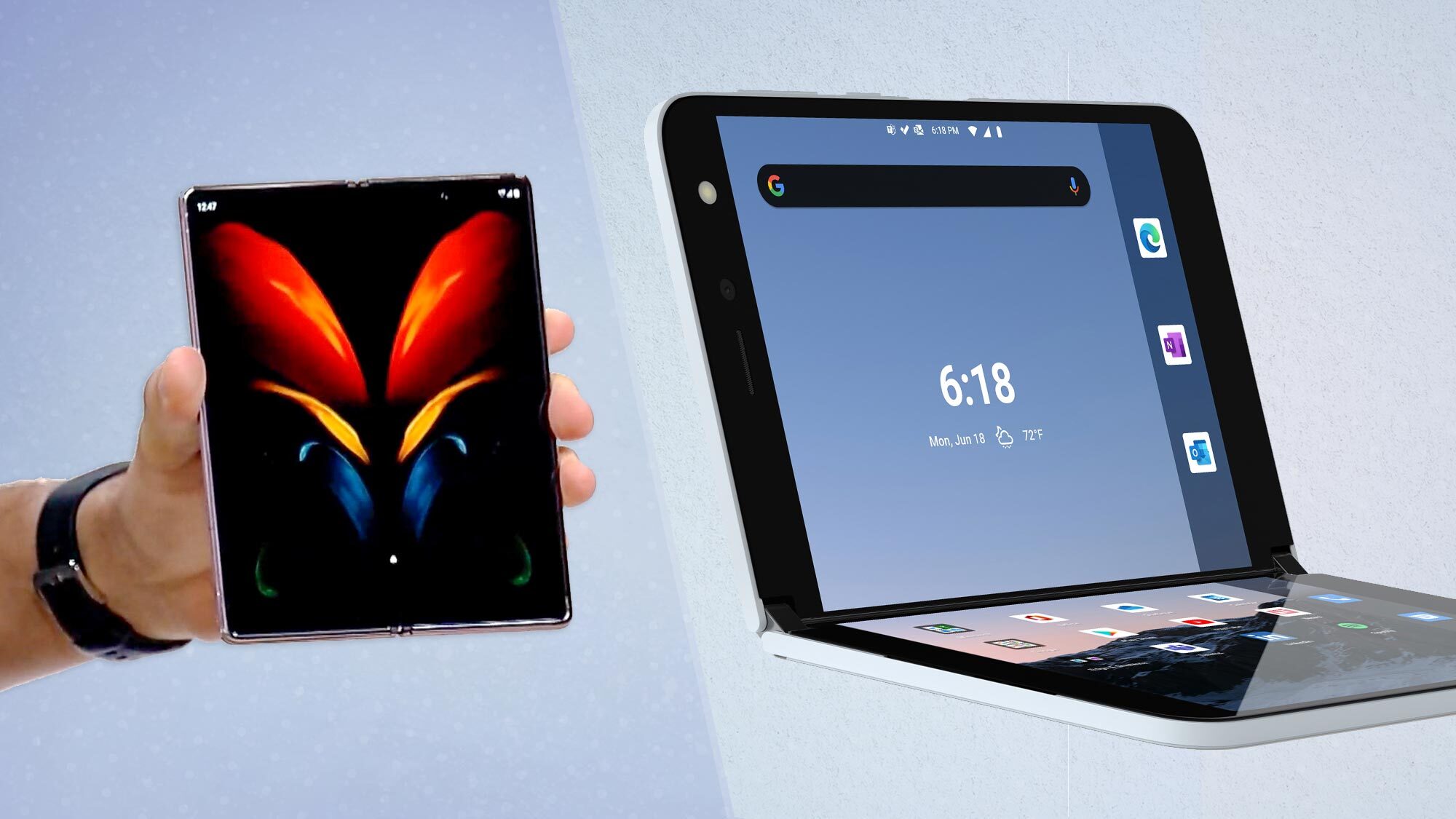
The Microsoft Surface Duo and Samsung Galaxy Z Fold 2 are both technically foldable phones, though that's about all they share in common.
Whereas Samsung's second-generation Galaxy Fold offers a massive, flexible OLED panel, Microsoft has gone a more traditional route with the Surface Duo, offering two separate 5.6-inch screens protected by glass that form an 8.1-inch canvas when folded out.
- The best Android phones of the year
- Best foldable phones
- Galaxy Z Fold 3: What Samsung's planning for this year's foldable
But that's not the only way in which these two devices differ. Under the hood, they're powered by different processors, sport differently-sized batteries and tout completely unique camera hardware. And the Galaxy Z Fold 2 packs a few conveniences you won't find on the Surface Duo, which Microsoft is still reluctant to even classify as a phone.
Now that we've reviewed both phones, this Microsoft Surface Duo vs. Samsung Galaxy Z Fold 2 comparison looks at all the significant ways in which last year's most radical flagship Android phones differ.
Surface Duo vs. Galaxy Z Fold 2: Price and release date
The Microsoft Surface Duo started shipping in September 2020 with a price of $1,399 for a device with 128GB of storage. You can upgrade that to 256GB by spending another $100, which you'll have to do if you ever want more storage in your Surface Duo, as it has no microSD slot for expandability. You can either buy the phone unlocked, where it will support all major networks in the U.S., or go directly through AT&T.
The Samsung Galaxy Z Fold 2 started $1,999, before Samsung cut the price to $1,799. These days the Galaxy Z Fold 2 is out of stock at most of the carriers and retailers that used to sell it; AT&T is about the only carrier to still feature the foldable. That's a sign that the phone will soon be replaced with the Galaxy Z Fold 3, set to come out later this summer.
Surface Duo vs. Galaxy Z Fold 2: Specs
| Header Cell - Column 0 | Microsoft Surface Duo | Samsung Galaxy Z Fold 2 (rumored) |
|---|---|---|
| Price | $1,399 | $1,799 |
| Display | Two 5.6-inch AMOLED (1800x1350); 8.1 inches combined | 7.6-inch interior OLED (120Hz); 6.2 exterior OLED |
| Processor | Snapdragon 855 | Snapdragon 865 Plus |
| RAM | 6GB | 12GB |
| Storage | 128GB, 256GB; non-expandable | 256GB; non-expandable |
| Primary cameras | 11MP (ƒ/2.0) | 12MP wide, 12MP ultrawide, 12MP 2x optical telephoto |
| Additional cameras | N/A | 10MP cover, 10MP main display |
| Battery size | 3,577 mAh | 4,500 mAh |
| Size | Closed: 5.71 x 3.67 x 0.39 inches; Open: 5.71 x 7.35 x 0.18 inches | Closed: 6.2 x 2.6 x 0.66 inches; Open: 6.2 x 5 x 0.27 inches |
| Weight | 8.8 ounces | 9.9 ounces |
Surface Duo vs. Galaxy Z Fold 2: Design and display
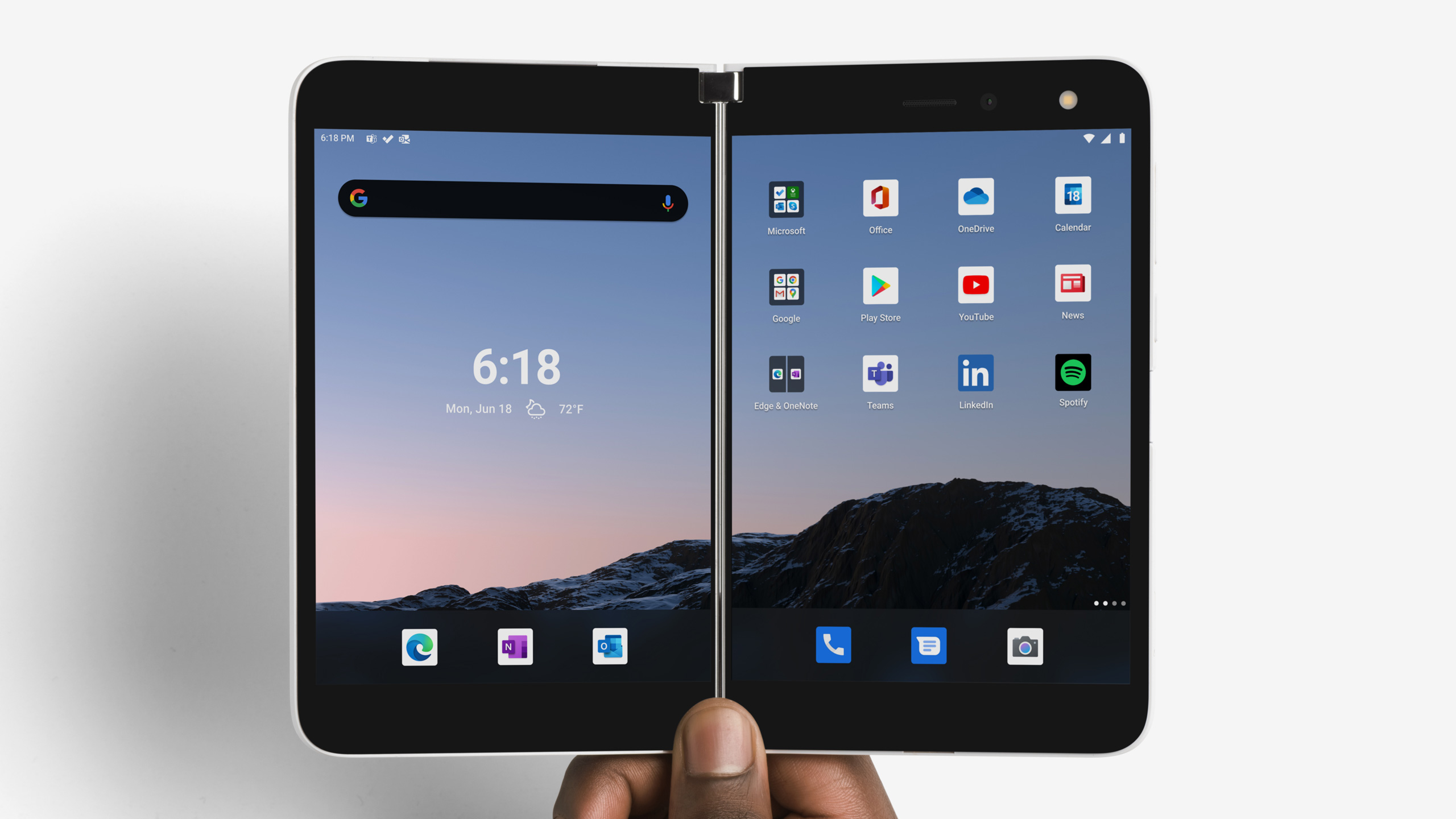
Are two displays better than one? Microsoft hopes you'll think so, as the Surface Duo packs dual 5.6-inch PixelSense AMOLED displays shrouded in strengthened glass, with big bezels above and below the panels. The entire device is exceptionally thin — the Surface Duo only measures 4.8 millimeters thick when outstretched — making it the thinnest folding phone or Surface ever built.
Get instant access to breaking news, the hottest reviews, great deals and helpful tips.
The Galaxy Z Fold 2 actually has two displays as well, though you can't really look at them at the same time. The one on the inside of the device measures 7.6 inches from corner to corner, and sports the same dynamic 120Hz refresh rate as the new Galaxy Note 20 Ultra.
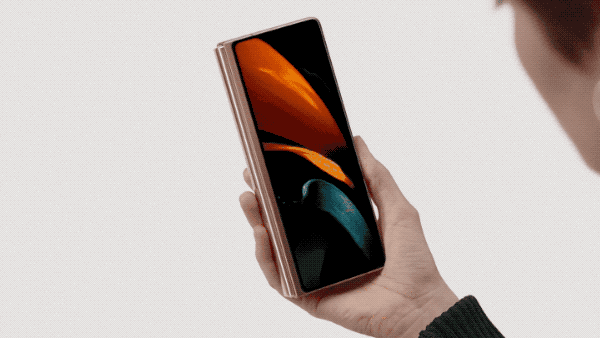
That panel is protected by Samsung's Ultra-Thin Glass, which offers more reliability compared to the fragile plastic substrate used on the original Galaxy Fold, though not anywhere near the same sort of rigidity and protection as what the Surface Duo offers. On the outside of the Galaxy Z Fold 2 is another 6.2-inch screen which essentially functions like that of a normal phone.
The Galaxy Z Fold 2 measures 6mm thick, which will make it quite a bit heftier than the Surface Duo when folded up. Both phones sport nifty hinges: the Surface Duo's hinge rotates a full 360 degrees and can stop at any point. The Galaxy Z Fold 2's can also stop anywhere along its path, though it's restricted between folding shut and opening so the interior screen lays flat.
Surface Duo vs. Galaxy Z Fold 2: Cameras

Avid mobile photographers will likely flock to the Galaxy Z Fold 2 before giving the Surface Duo any consideration. That's because Samsung's foldable sports three lenses, while the Surface Duo has only one above its right display. For Samsung's device, that's a trio of 12-MP sensors on the back, tied to primary, ultrawide and telephoto optics. The telephoto has a 2x optical zoom advantage.
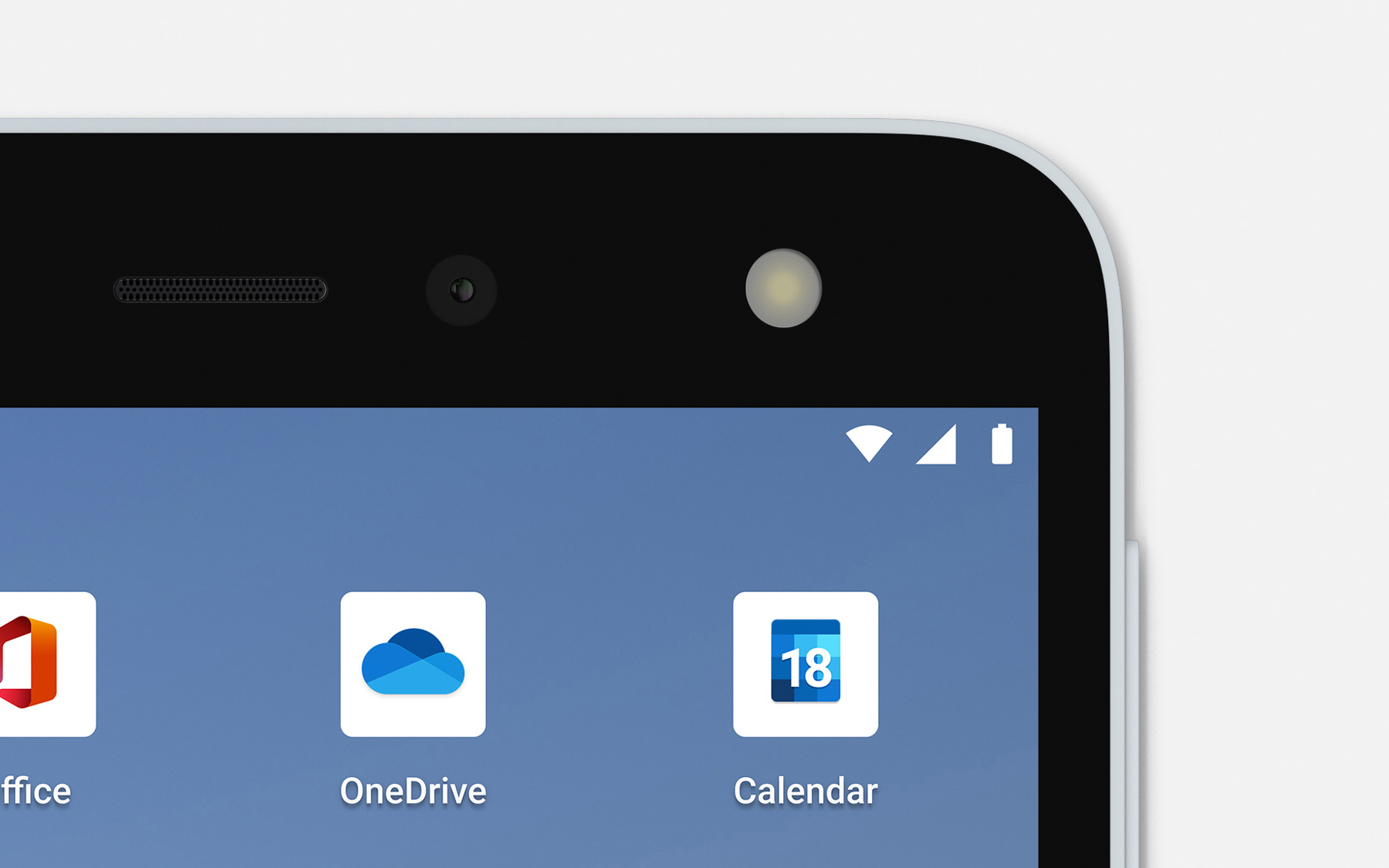
As for the Surface Duo, don't expect anything earth shattering. Microsoft has made it clear this phone is not meant primarily for shutterbugs, with a single 11-MP, ƒ/2.0 shooter above one of the screens. That means you'll have to fold the phone back if you want to take a picture of something in front of you.
Microsoft stresses the Surface Duo's single-lens system still leverages artificial intelligence and computational photography to achieve tricks like a shallow depth-of-field portraits and a dedicated low-light mode. That said, we'd be lying if we expected the Surface Duo's camera quality or versatility to strike anywhere near the Galaxy Z Fold 2's, let alone one of the best camera phones. It simply doesn't appear to be a focus of the Surface Duo, and the specs sheet suggests as much.
Surface Duo vs. Galaxy Z Fold 2: Performance
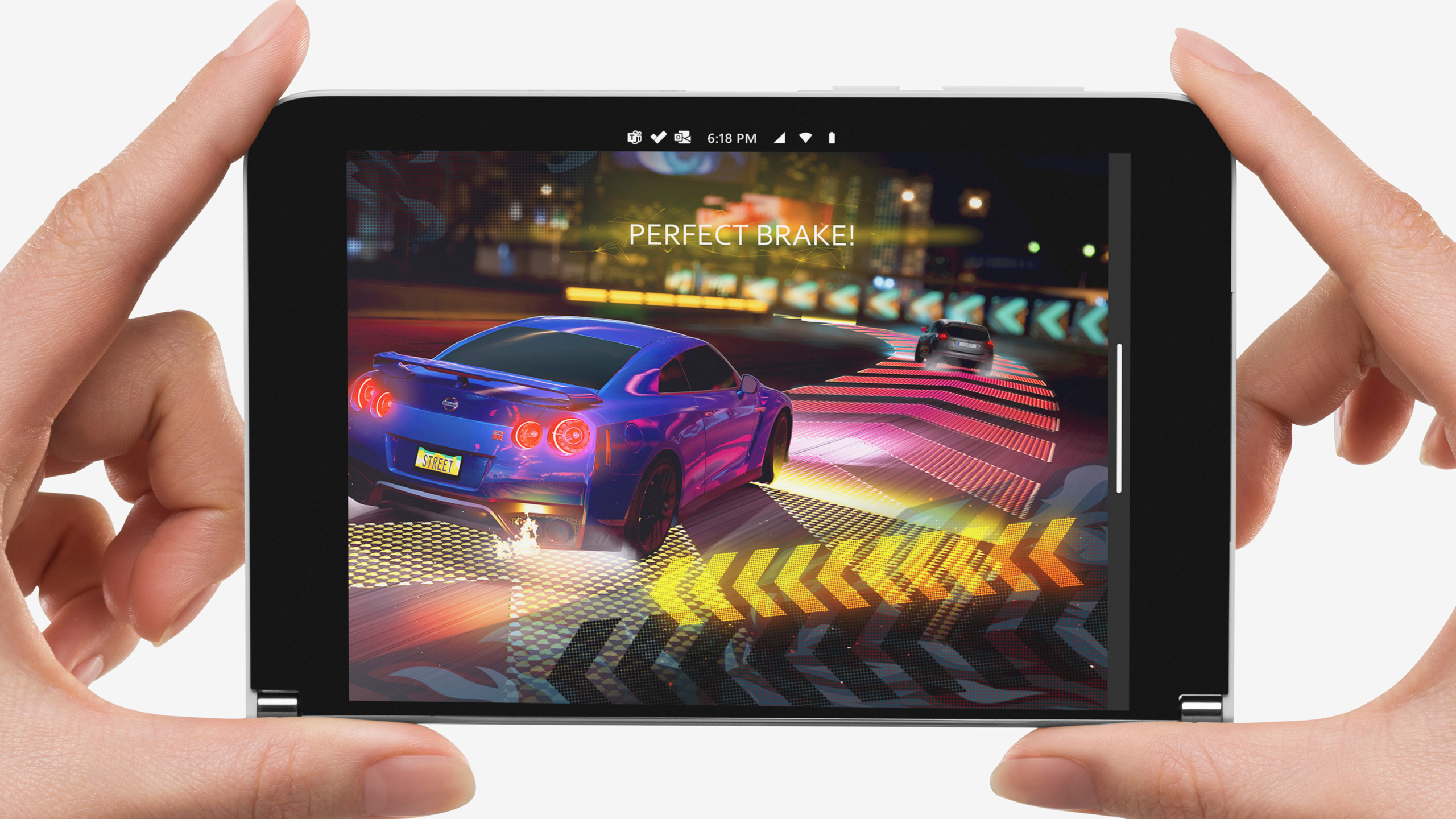
Here's another area where the Surface Duo and Galaxy Z Fold 2 differ massively. Microsoft's $1,399 handset utilizes 2019's Qualcomm Snapdragon 855 chipset and 6GB of RAM, whereas Samsung incorporates the same Snapdragon 865 Plus silicon as the Galaxy Note 20 and 12GB of RAM.
The Galaxy Z Fold 2 will also support 5G networks on all major networks — something you certainly won't find in the Surface Duo, which is only built to connect to 4G LTE towers.
That disparity in processing power is reflected in the phones' respective benchmark scores. The Galaxy Z Fold 2 posted a 3,193 result on Geekbench 5. That topped the Surface Duo's 2,862 score on that same test. Samsung's foldable phone also bested the Surface Duo in the graphics tests we ran.
Surface Duo vs. Galaxy Z Fold 2: Battery
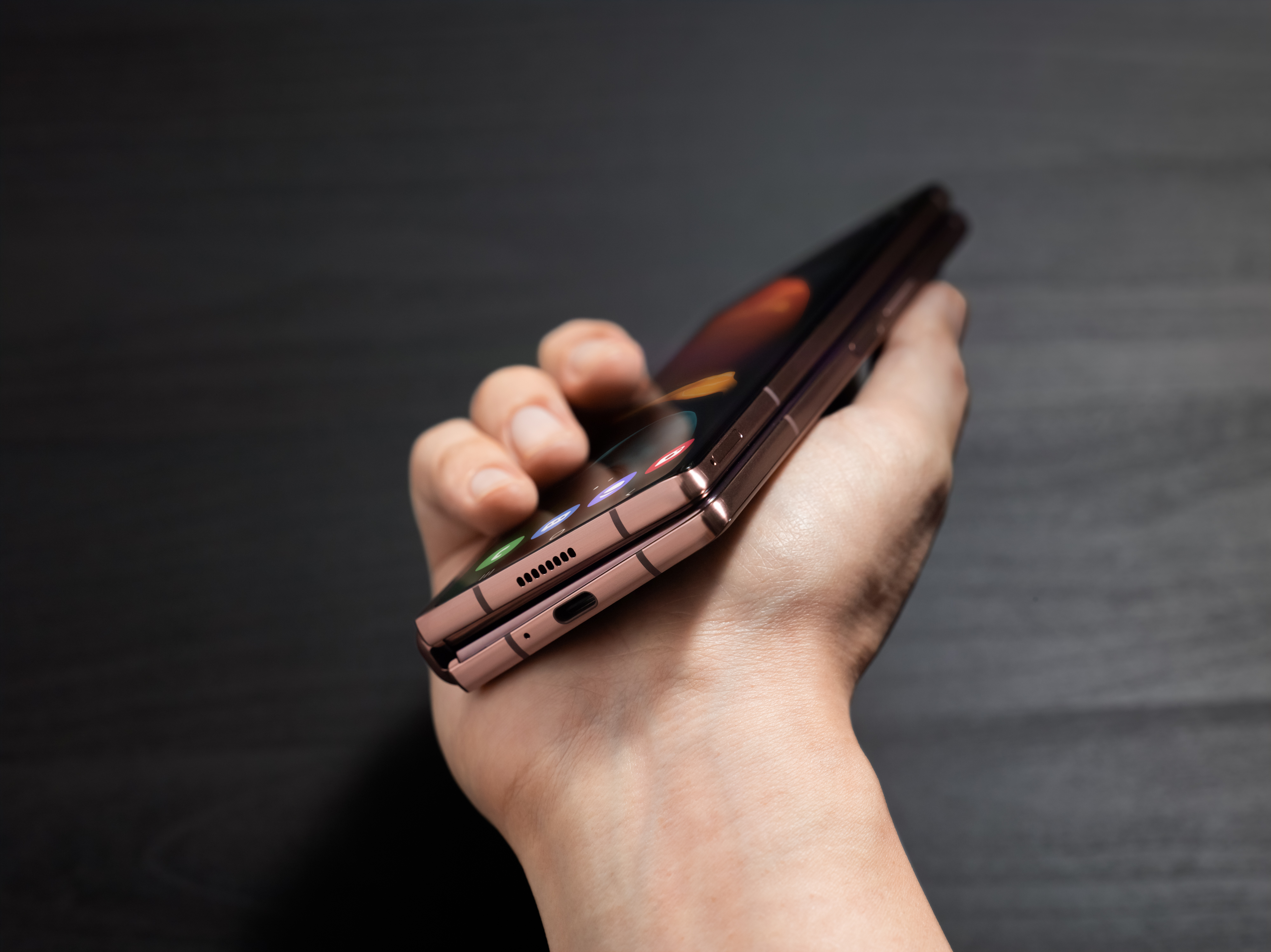
With two screens to power, you'd imagine the Surface Duo would pack an absolutely gigantic battery. Yet Microsoft has only built a 3,577-mAh power pack into its first Android handset, which is quite small compared to the 4,500-mAh one inside the Galaxy Note 20 Ultra.
The first Galaxy Fold had a 4,380-mAh battery, and that device didn't even tout a 120Hz refresh rate or 5G connectivity. With the increased power demands of its modern flagships, we expected Samsung would increase the second-generation Fold's battery capacity to accommodate, and it has — to 4,500 mAh.
The Surface Duo only lasted 9 hours and 27 minutes when we ran its single display through our battery test, which involves continuous web surfing over a cellular connection. In dual-screen testing, that result fell by 2 hours. The Galaxy Z Fold 2, in contrast turned in a respective time of 10 hours and 10 minutes.
Amazingly, Samsung baked wireless charging support into the original Galaxy Fold, and it makes a return in the sequel as well. The Surface Duo unfortunately makes no provisions for wireless charging nor NFC, which is pretty disappointing given the high price.
Surface Duo vs. Galaxy Z Fold 2: Software and special features
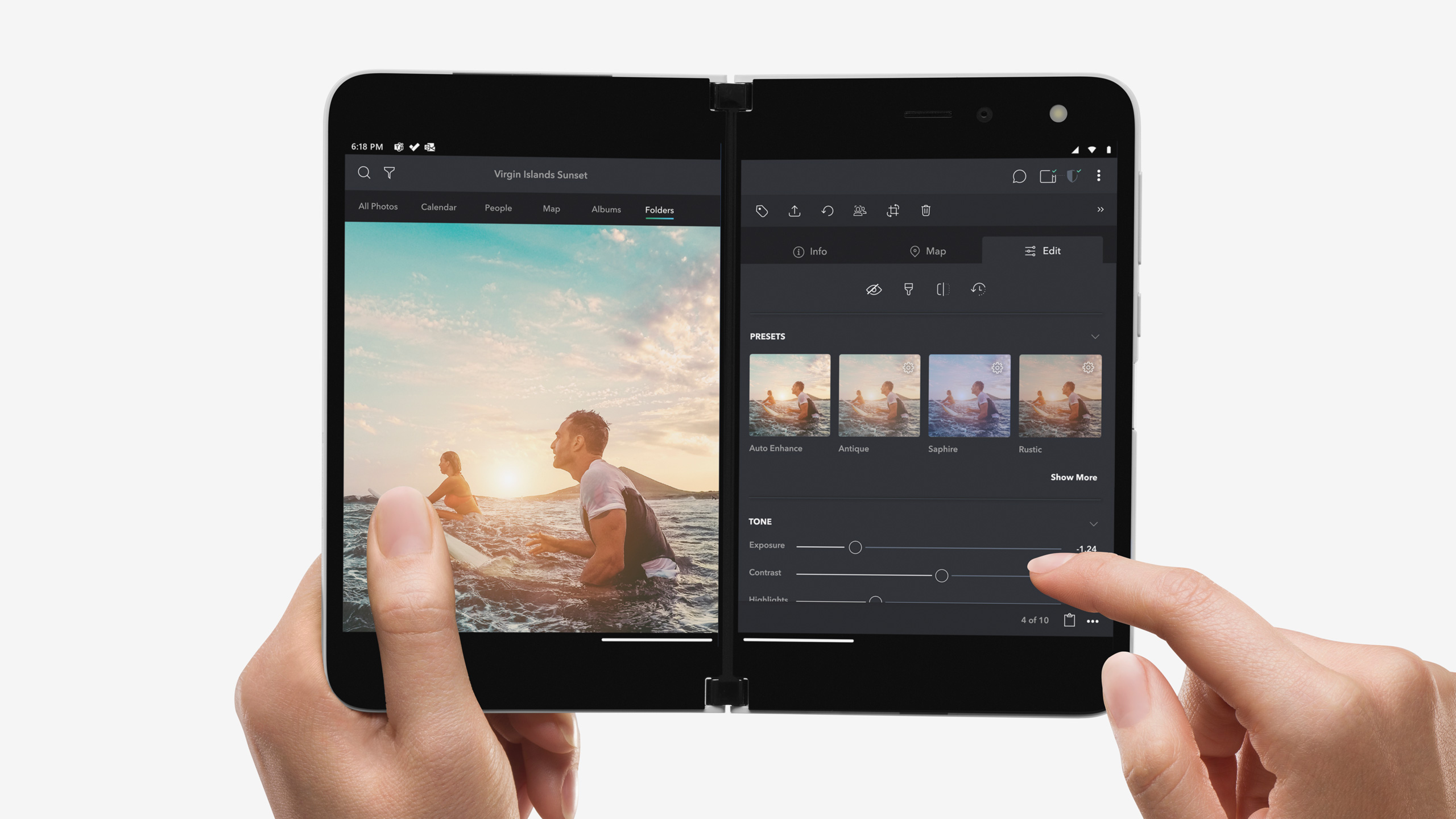
Microsoft hopes that Surface Duo owners will find that what the dual-screen phone lacks in hardware, it'll make up for in clever, intuitive software. The Surface Duo is built to seamlessly move you between its two displays in a logical way that keeps you on task and helps you work smarter.
For example, if you open an email in the Surface Duo's Outlook app, it'll populate the unused screen with the contents of the message you've just tapped, leaving your inbox open on the first panel. And if you want to reply, it'll slide the correspondence over to replace your inbox and make room for a compose menu.
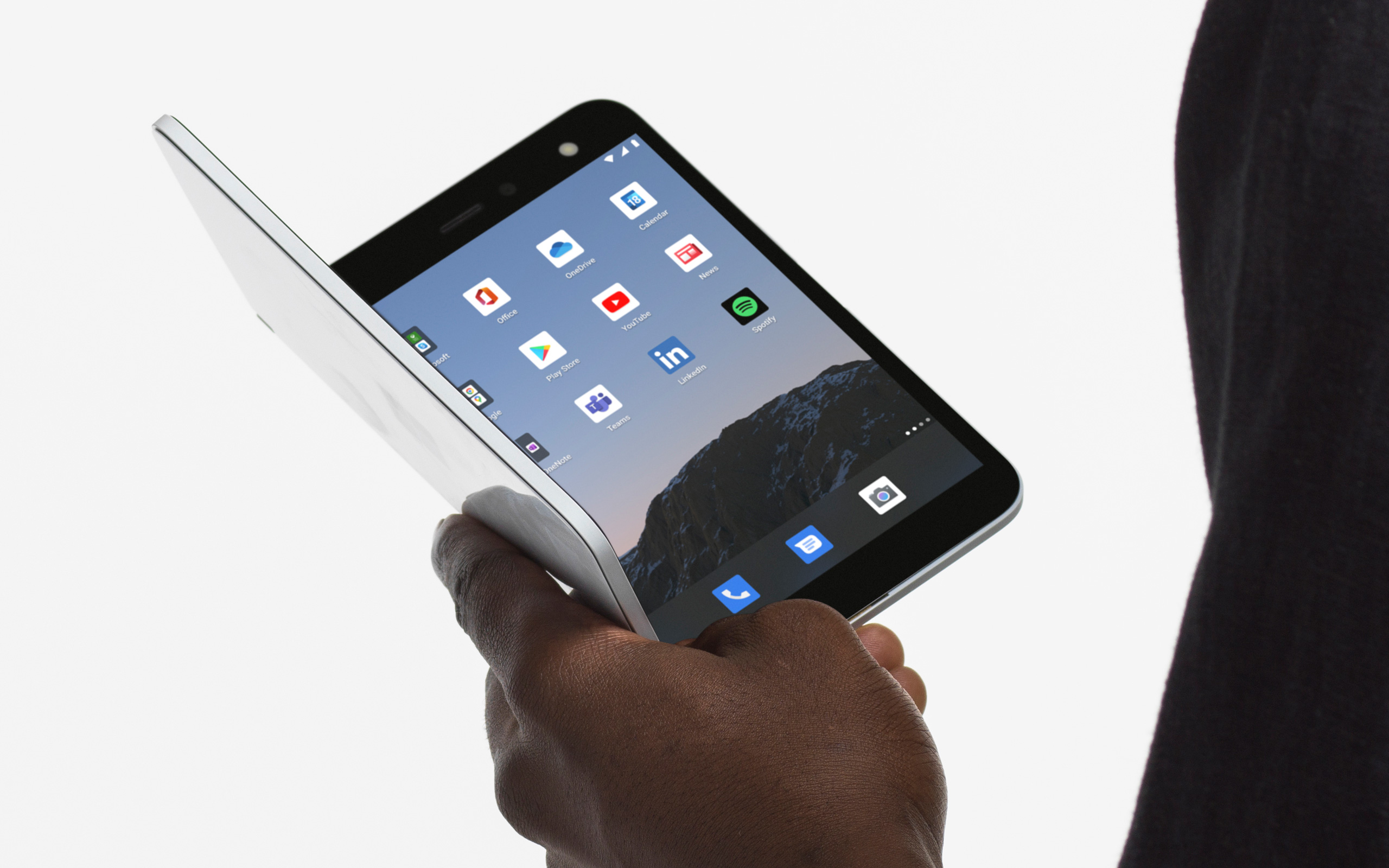
Microsoft says the APIs it's built atop Android on the Surface Duo are smart enough to know what apps and links to put where and when, meaning third-party developers don't have to purposefully code their apps to take advantage of the Surface Duo's multiple panels.
As for the Galaxy Z Fold 2, Samsung has expanded upon the first Fold's nifty App Continuity feature, whereupon an app open on the outside display would move to the interior screen for a closer look when you opened the device. Now, that feature works for YouTube video as well.
Additionally, Samsung has brought the Galaxy Z Flip's Flex Mode to the Z Fold 2, so that the panel reacts dynamically depending on what you're doing. For example, if you're video chatting with a friend over Google Duo, you can fold the phone slightly so that the feed plays in the top portion, while menus and controls are displayed on the bottom half of the device.
There's no S Pen support like you now get on the Galaxy S21 Ultra. For that, you'll need to wait until the Galaxy Z Fold 3 comes out — at least, according to the rumors.
Both Microsoft and Samsung have committed to three years of Android platform updates for their phones, which give anyone who spends top dollar on one of these devices peace of mind.
Surface Duo vs. Galaxy Z Fold 2: Outlook
Obviously, the Surface Duo and Galaxy Z Fold 2 are very different sorts of foldables — so different, in fact, that they may attract entirely different users.
The Surface Duo is for the productivity-minded crowd that could really benefit from the phone's windowed motif and multitasking-focused interface. It's also a good companion for those who actively use many Microsoft services.
The Galaxy Z Fold 2 is more of a media powerhouse, with its far more sophisticated camera technology and unencumbered flexible display. It's also for the user excited about the future of foldable panels and mobile technology as a whole. Using a device like the Galaxy Fold or Galaxy Z flip is a magical experience the very first time you do it, and it's certainly flashier than the seemingly well-built but ultimately more traditional Surface Duo.
The better processor, superior cameras and longer battery life make this a walk-over for the Galaxy Z Fold 2. And with a new foldable coming in a few months, Samsung figures to extend its lead over Microsoft.
Adam Ismail is a staff writer at Jalopnik and previously worked on Tom's Guide covering smartphones, car tech and gaming. His love for all things mobile began with the original Motorola Droid; since then he’s owned a variety of Android and iOS-powered handsets, refusing to stay loyal to one platform. His work has also appeared on Digital Trends and GTPlanet. When he’s not fiddling with the latest devices, he’s at an indie pop show, recording a podcast or playing Sega Dreamcast.
